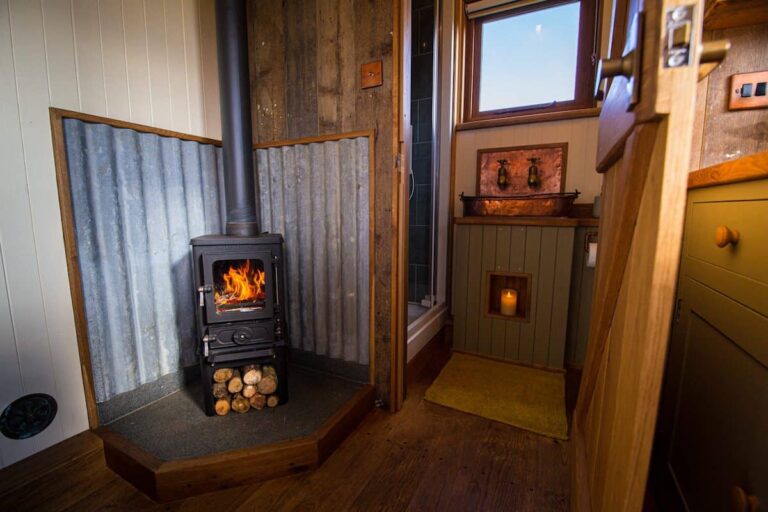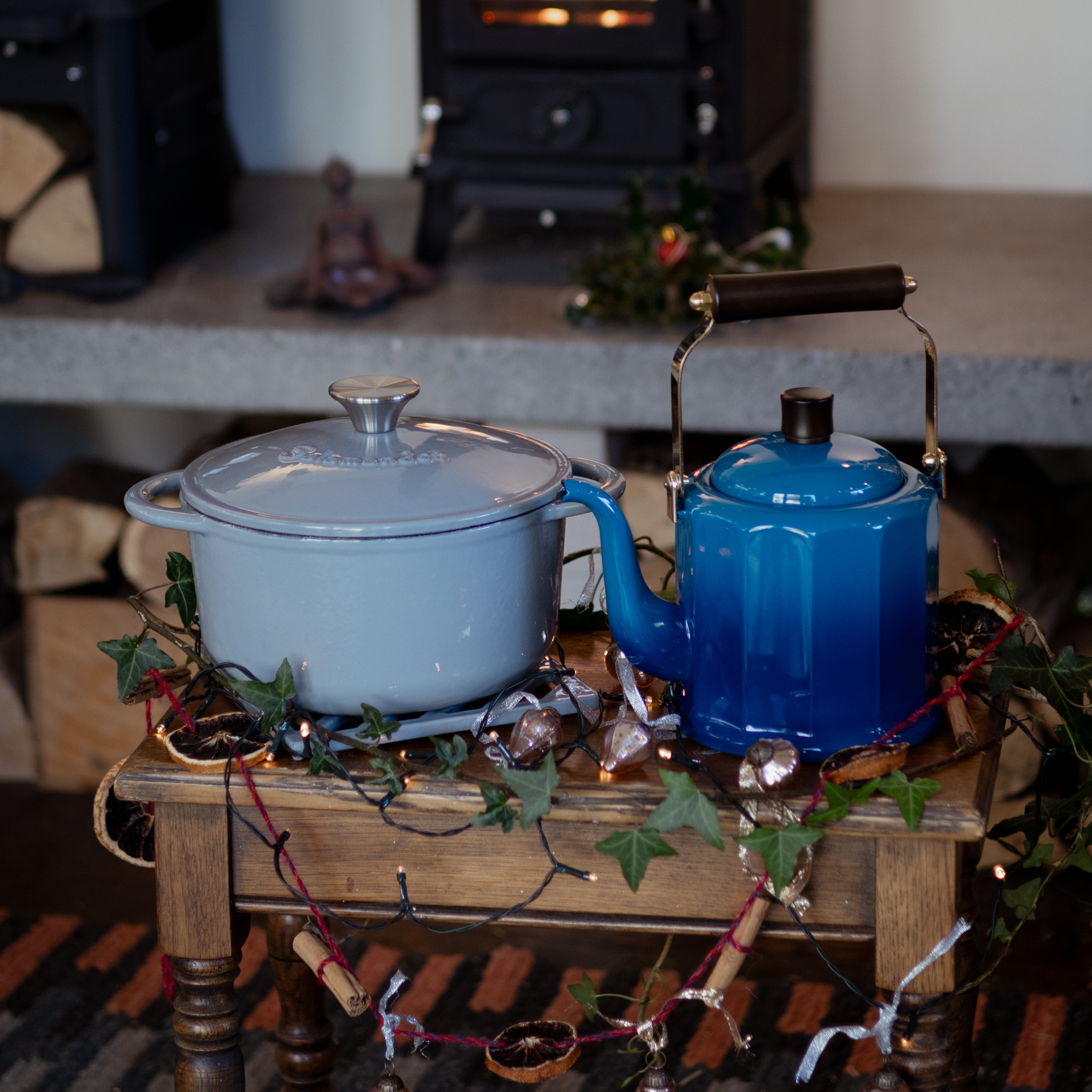Maintaining Your Small Wood Stove Over Summer
So you have recached the end of the winter season and your stove has gotten lots of use! Now the warmer weather is here, it is the perfect time to give your small wood stove a deep clean and annual maintenance check over. In this post we will explain how you should go about maintaining your small wood stove over summer. This is a very simple process that every stove owner should consider – not only will this increase the lifespan of your appliance, but it will also improve the safety, efficiency, and the performance of your small wood burning stove.
Summer is the perfect season for maintaining your small wood stove, and there’s a number of things that you can do to keep your stove in tip-top condition! This time of year is also ideal for carrying out any repairs, so that your stove and flue system are in great working order for whenever they need to be used again.
A very important part of your stove maintenance is checking and replacing any internal parts such as the baffle and side bricks. We offer all of these parts for the Hobbit Stove and Little Range Cookstove. You can visit our spares and maintenance section for the full list of products.
Cleaning a small stove
Before you can take a closer look at the condition of your small wood burning stove or cookstove, you will need to give the appliance a good clean.
This section acts as a quick guide to cleaning your Hobbit Stove or your Little Range Cookstove, but the full details and warnings are provided in the instruction manual that’s included with each appliance.
Please note: only ever attempt to clean your stove when it is completely cool to the touch. You will need to ensure that the fire has completely stopped burning for quite some time.
1) Cleaning the outside of your small wood burning stove
Start by wiping down the main body of the stove and the top and bottom doors with a clean dry cloth, or a feather duster. Make sure you only use a soft cloth that will not cause any abrasion to the appliance. It’s also a good idea to use a cloth that’s machine washable, as the stove could mark the cloth, especially if it has been painted.
If there are more permanent marks on the appliance that you wish to remove, then you might need to repaint your stove with some high temperature Calfire stove paint.
2) Cleaning the glass of your small wood burning stove
Now you can move onto the glass! There are different types of stove glass cleaners on the market, but after a lot of trial and error the best cleaning technique we found is a natural approach. All you need is some newspaper or tissue paper such as blue roll, a bowl of water and ash.
Dab your chosen material in the clean water to get it slightly wet. Next, lightly dip the newspaper or tissue into the cool ashes of your fire before gently rubbing it against the glass, taking care not to scratch it. If necessary, you can wipe away any smears with a damp tissue and dry the glass with a soft clean cloth.
If you have some particularly stubborn build-ups on the glass that need removing, swivel the clips at each corner of the window to remove the glass from the door. If the clips are stuck in place due to build-ups of soot, then you can apply a small amount of WD40 and give them a light tap to get them moving again. You can then lay the glass on a flat surface to give it a good scrub, and you can also use some glass cleaner if the pane is especially dirty!
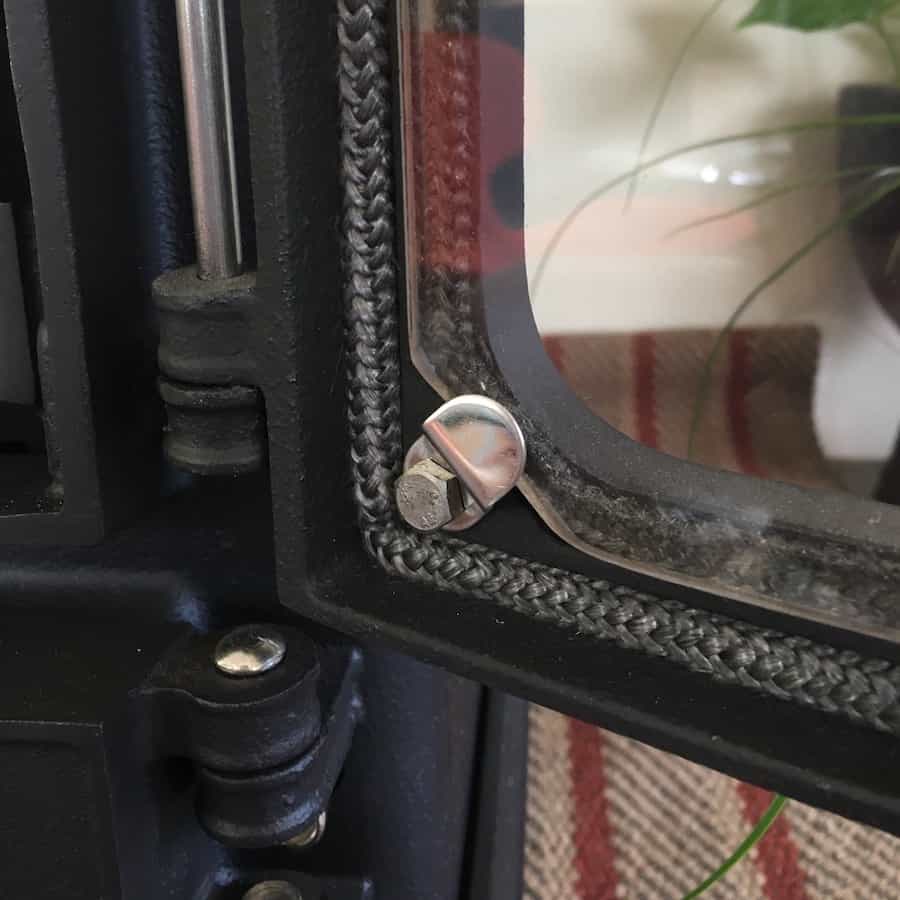
3) Cleaning the inside of your small wood burning stove
Start by riddling the stove. This can be done by using the Salamander multi-tool to operate the riddling control, which is located between the two pins on the right-hand side of the bottom door. Every Hobbit Stove and Little Range comes with a multi-tool included as standard.
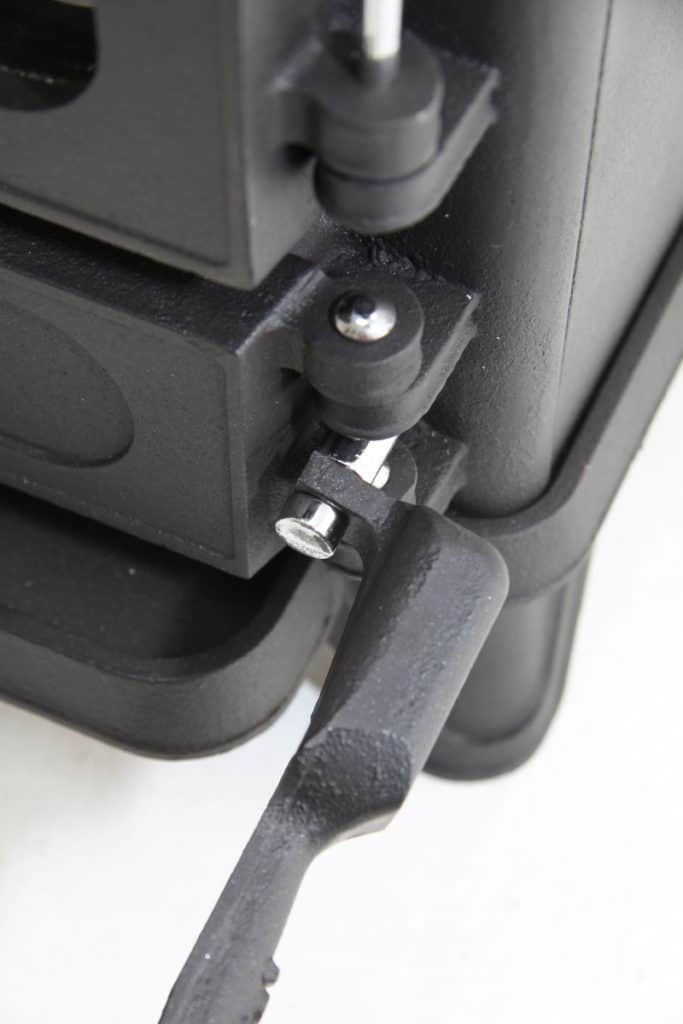
Once you’ve locked the multi-tool in place, gently push and pull the riddling arm forwards and backwards a good few times. This will turn the centre grate, causing any small deposits in the firebox to fall through the grate and into the ash pan. You can use the other end of the Salamander multi-tool to remove the ash pan before emptying the contents into your waste bin, or into your garden (ash is great for the soil!).
Every Hobbit stove and Little Range comes with a centre grate and an ash pan included as standard.
Next, vacuum inside the stove and behind the doors to get your small wood stove looking spotless! It’s a good idea to remove all of the ash before the stove is left over summer, as ash can be corrosive if it’s left over time.
Inspecting the appliance
The most important step when maintaining your small wood stove is to make sure that the appliance has been carefully inspected, and any repairs have been carried out before you fire up your stove again once summer is over.
Now that your stove is nice and clean, you will be able to identify any issues quickly and easily. Inspecting your small wood burning stove will ensure that the appliance is ready and raring to go as soon as the evenings draw in and the days begin to get cooler.
- Start by taking a close look at the glass window of your stove. The glass can get damaged over time if you have fired your stove too vigorously, or if your fuel has come into contact with the glass window, for example. If there are any cracks or scratches, then it’s a good idea to order a replacement piece of glass so that the stove is safe to operate.
- Check the fire rope seals behind the top and bottom doors of your stove. There are 3 rope seals that you will need to inspect – one around the edge of the top door, one around the glass, and one around the bottom door. The fire rope should be kept firmly in place, and it should remain flush to the cast iron. If any rope has come loose or worn away, then you can replace it with our fire rope and glue kit. Maintaining this part of your small wood stove will prevent any smoke or soot escaping from the appliance. The rope seals also act as cushioning, as they stop the top and bottom doors from scraping against the main body of the stove.
- Once you’ve opened the top and bottom doors, take a good look inside your small wood burning stove to check the internal components. Apart from the main body of the stove, the internal parts are consumable and will be subjected to wear over time.
- If you have been burning the stove too vigorously, or if you’ve been burning high-temperature fuels like anthracite, then you might find that you have worn through the centre grate, or the fire bricks at the back and sides of the stove. If you are using fire bricks made from vermiculite, then these will wear down quicker than our cast iron bricks. Alternatively, the baffle may have become warped over time. You will need to remove the side bricks before you can remove the baffle. The baffle can be taken out of the stove by lifting it up, moving it towards you, and then tilting it down. You can then rotate the baffle before extracting it through the top door of the stove. If the baffle has become stuck in place, then you may need to tap it with a rubber mallet to help ease it out.
- Now that you’ve examined all of the essential working parts of your stove, it’s a good idea to step back and see how it’s looking! If you think the stove could do with a fresh coat of paint, then make sure you take a read through this article here, where there’s also lots of helpful videos that will guide you through the process. Warning: After you have painted your stove, the appliance will need to be properly cured. This can be done by lighting a series of small fires. Each fire should gradually increase in size, and you should let the fire fully go out before lighting the next one. A strong odour may be released by the paint whilst it cures. Ensure the room is well ventilated, and this will stop after the first few firings.
- Lastly, you will need to check your flue system and the chimney itself. This should be carried out by a professional chimney sweep at least once a year. Your chimney sweep will be able to thoroughly clean and inspect your flue system to make sure it’s free of any blockages, and so that it’s safe to use. Book your chimney sweep through HETAS.
Your chimney sweep will probably be able to service your stove for you as well, but if you need somebody to take a look at your Hobbit Stove or your Little Range to make sure it’s functioning correctly, then you can enter your postcode on our authorised dealers page to find your nearest local business.
Maintaining the fire cement around your stove collar
- Start by taking a look at the stove collar. If you have a Hobbit stove, then it can be configured with a top or rear exit, so you might need to get behind the stove to take a good look. On the other hand, our Little Range can only have the flue exiting from the top of the stove, which makes this step a bit easier.
- Carefully examine the join where your single wall flue pipes, or an adaptor, connect into the outlet of your small wood burning stove. There should be a solid ring of fire cement around the base of the flue pipe to provide a good seal and to keep your flue parts firmly in place. If there are any cracks or gaps in the fire cement, then it’s a good idea to re-do this. See below what the fire cement should look like:
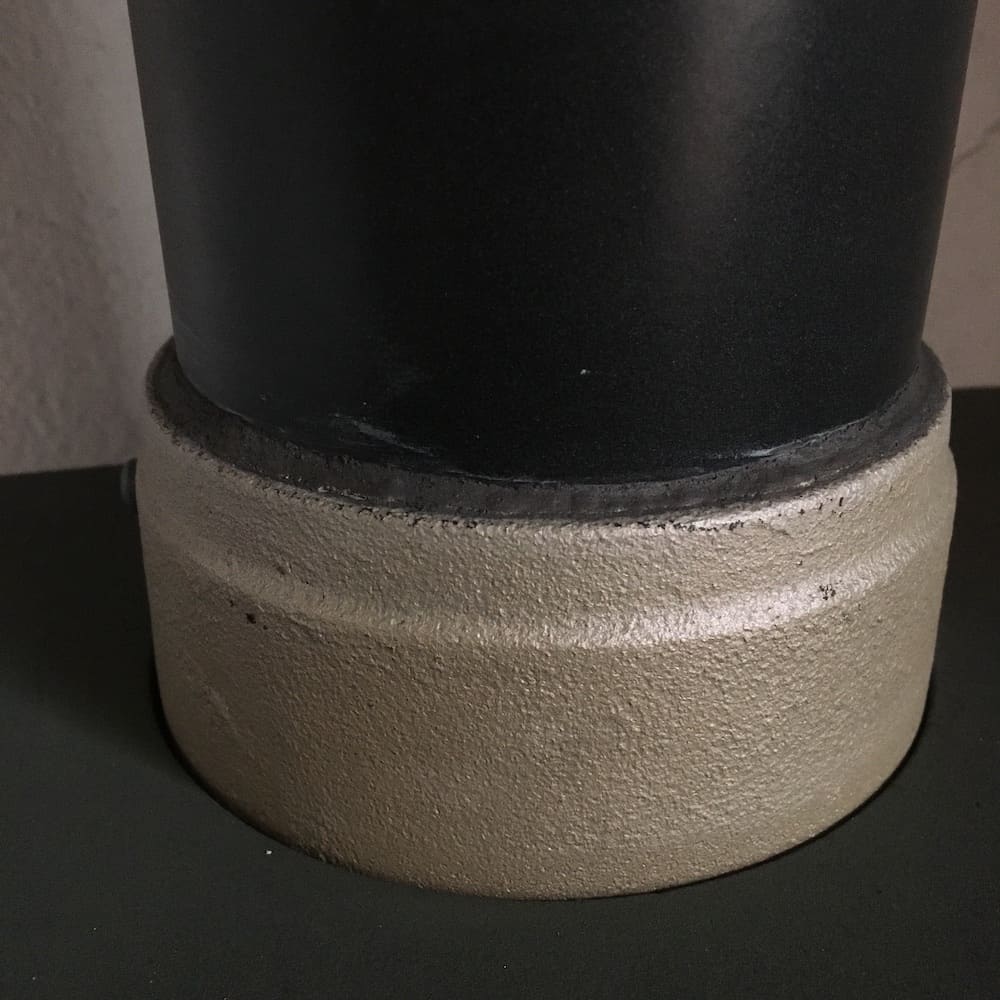
3. You can remove the fire cement by giving it a tap with a rubber mallet, before wiggling the stove out of place. You may need 2 people in order to safely move the appliance. Next, carefully cut the nozzle of the fire cement with a sharp blade, so that you can apply the right-sized bead. Fit the cartridge into a caulking/sealant gun before applying the fire cement in place. You can easily scrape away any excess cement so that there’s a nice clean finish. You will need to give the cement plenty of time to dry before you fire up your stove again.
Checking your flue system
Warning: This task should be left to a qualified professional. If you think there is a problem with your flue system, then do not attempt to fix it yourself. We strongly recommend that you contact a local HETAS installer/chimney sweep to assess your chimney and to resolve any issues.
This should be left to a professional, but there’s still a few things that you can do yourself. Here are a couple of problems that you may encounter, along with some quick fixes:
- Is your stove squawking? If you can hear some unusual sounds coming from your small wood burning stove, then there’s a good chance you might have some visitors on the roof! Seagulls will often nest on chimneys throughout summer when your stove is not in use, which can lead to all sorts of debris falling down the chimney and blocking the liner. You may wish to light your stove occasionally to deter any birds from perching on your roof. There’s also a wide range of different spikes and bird guards that can be installed on your rooftop to stop birds from nesting. If you’re happy for birds to nest there, then there’s nothing you need to do! The nest can be safely removed when it’s no longer in use, and a chimney sweep can clear away any debris.
- British weather. Although it’s the middle of summer, you might still experience some particularly stormy weather. If you can see any flue parts have come loose or been damaged, then we offer a wide range of extra flue parts that have been manufactured by Midtherm.
Storing your small wood burning stove
After cleaning the appliance and carrying out any repairs, your stove will need to be shut down a certain way. You will need to ensure there’s a good airflow through the appliance, as this will help prevent condensation from forming, which can lead to rust. You’ll also want to remove any ashy deposits in the stove, as these can be corrosive if left over time.
You can do this by keeping the top and bottom doors shut, but make sure you leave a small gap behind the air wheel. It’s also a good idea to leave the secondary and tertiary air controls in the open position. This can be done by flicking the levers to the right-hand side. If you have a non-Eco Design Hobbit stove, then you’ll just need to flick the secondary air vent at the back of the stove into the open position, which is to the left-hand side.
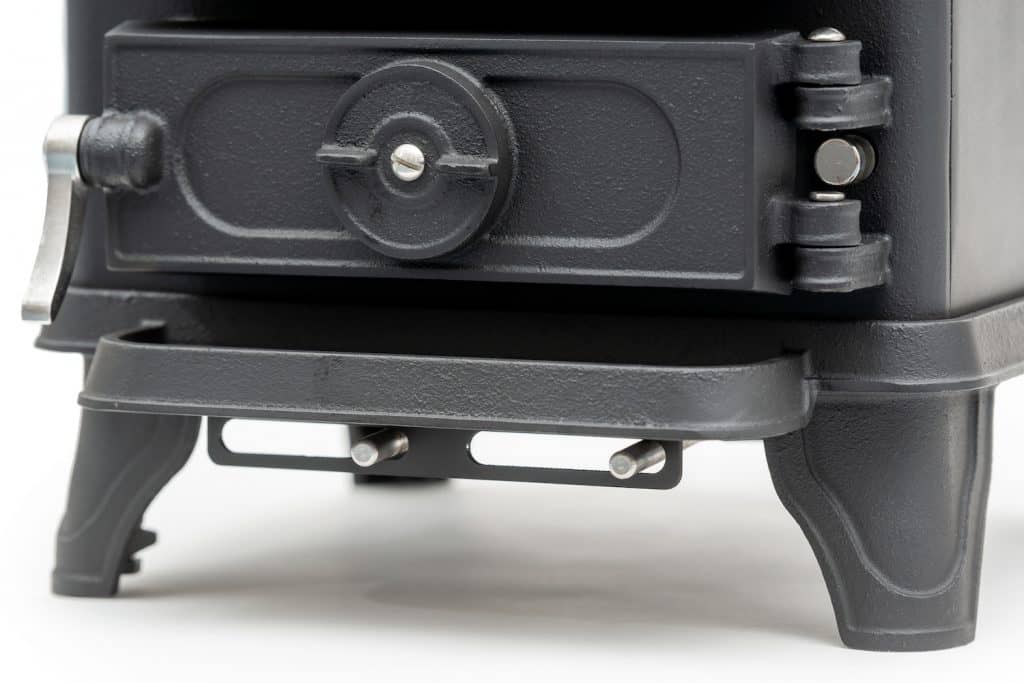
Other uses for your small stove over the summer
Outdoor cooking! It’s very easy to remove the fire cement in order to uninstall your stove, so why not take your Hobbit Stove outside for some wood-fired stovetop cooking!
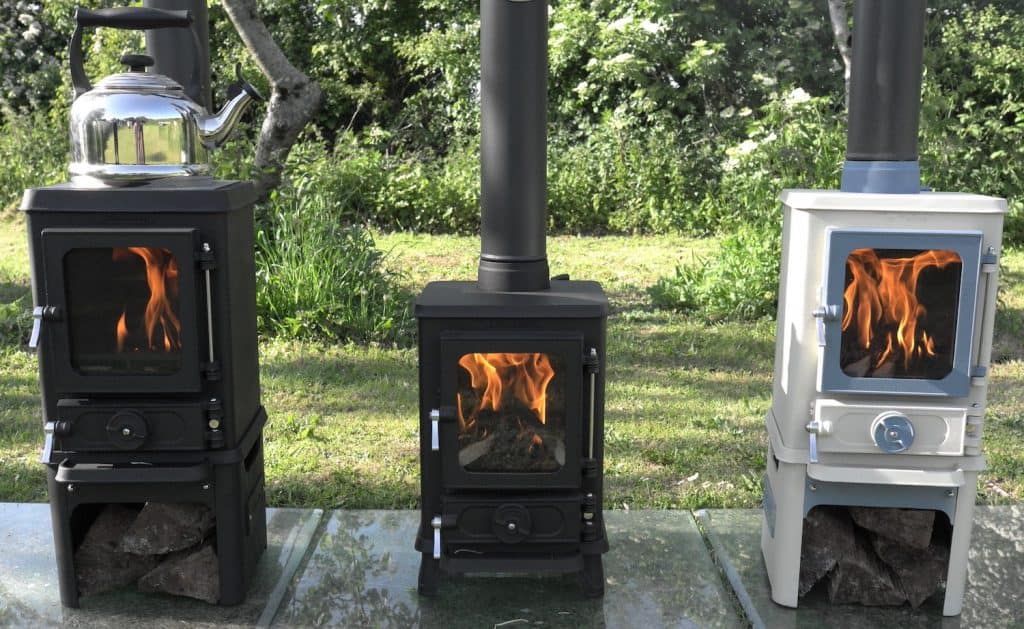
Once you’ve removed the stove from its original setting, make sure you fix a plastic bag to the bottom of the flue with a couple elastic bands, as this will prevent any rain or condensation from falling into your fireplace. When you’ve taken the stove outside, you’ll need to insert a 1000mm length of 4″/100mm single wall flue into the stove, so that your tiny wood burner has a good enough draw.
You can then sit around a fire with your friends or family without any smoke blowing into everyone’s faces! Whilst the fire is lit, you can toast some marshmallows over the embers in the firebox with our T1000 toasting fork. You could even place a cast iron cookpot on top of your stove, so that you can cook dinner at the same time!
Tip: When you have finished using the stove outside, make sure you cover the stove and store it in a warm, dry place. If the stove is left outside in the elements, then it will rust.
Make a heartwarming display! A stove sits at the heart of the home, and it’s a great focal point in any room. As the fire won’t be lit, why not make a display by decorating your fireplace?
You could place some summer photos or any holiday pictures on top of your stove, along with any objects or souvenirs that you’ve collected on your travels. Our stovetop goddess makes a beautiful display piece, and you can use it for essential oils, or for burning incense. The little dish is also perfect for storing trinkets!
If you’re missing the warm glow of a fire, then why not recreate it with some atmospheric lighting! You could place a candle inside the firebox of your stove whilst it’s not in use, or even some fairy lights, which will give a very cosy effect.


